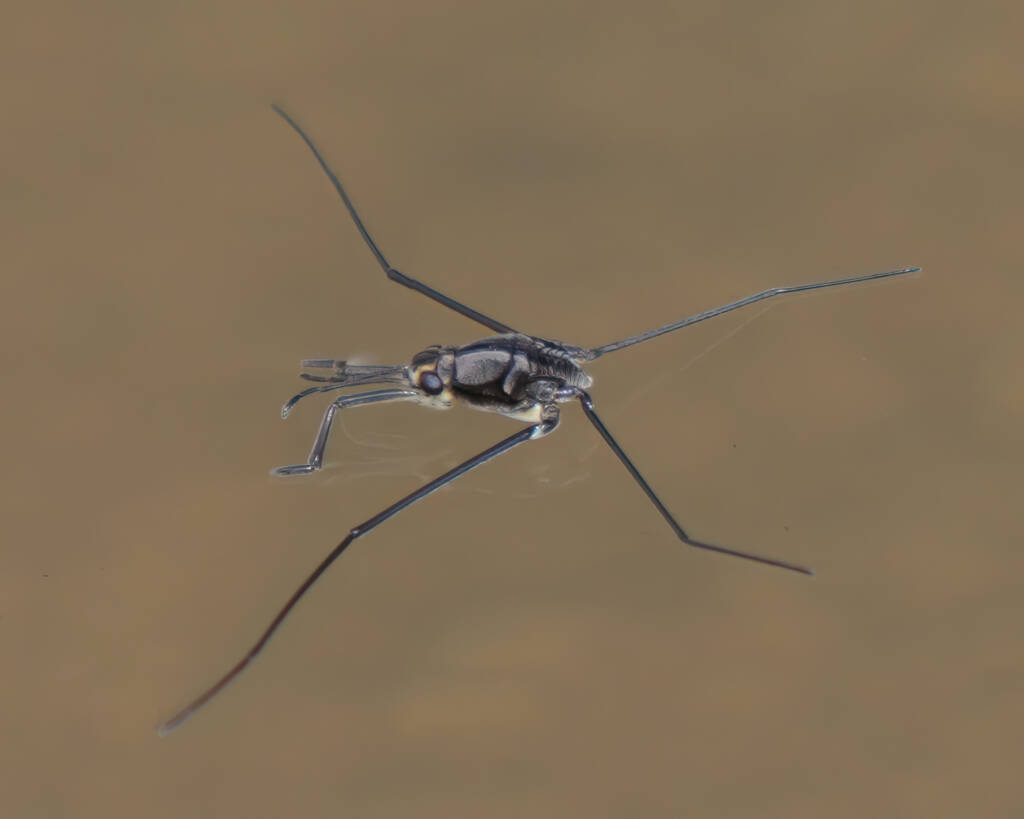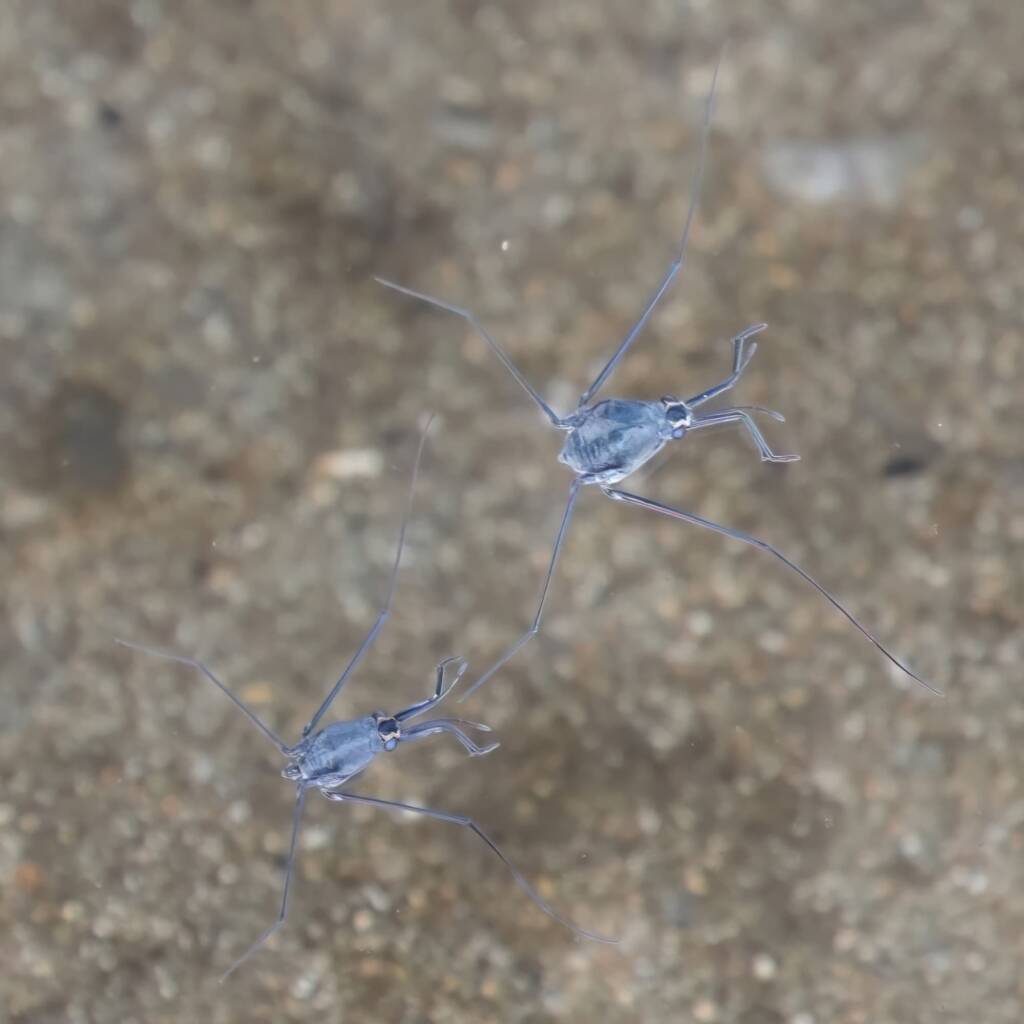Author Phil Warburton ◦
We recently came across a group of unusual insects called sea skaters. We observed a mating aggregation of several dozens of these interesting and elusive members of the order of Hemiptera (the “true bugs”), in the creek at Cullendulla, which feeds into Batemans Bay on the NSW south coast.
A definitive ID at species level was not possible, however following a very detailed examination, it seems they are in the genus Halobates and quite likely they are Holobates zephyrus, the zephyr sea skaters, members of a genus of marine bugs in the family Gerridae. There are only a couple of previous, rather blurry, observations of this species on iNaturalist. Despite the lack of recorded observations, it is probably not uncommon – just very difficult to photograph and identify, as it probably spends much of its life hidden in mangroves or scooting around in coastal waters.
The genus Holobates comprises 40 described species, most of which are coastal dwellers like our putitive zephyr skater, but 5 species are ocean travellers that live and breed on the high seas! They are the only insects to inhabit the open oceans.
The Halobate species can neither swim nor fly; unlike their relatives, the freshwater Gerridae pond striders, they are permanently wingless. They exist in a two-dimensional world on the water surface. They have a very hydrophobic body surface that helps them survive in this unlikely niche. When they are immersed under the water, body hairs trap a layer of air which enhances their buoyancy and returns them to the surface.
They can effortlessly scoot across the water surface at high speed (up to 1 metre per second) without slipping and can easily leap free of the water surface at will. Oriented hairs and nanostructures on the legs, are central to the mechanism for doing this, allowing them to exploit the surface tension of the water. The front and rear legs are used for spreading their weight evenly on the water surface and the middle legs are used mainly for propulsion.
This marine family are exposed to the sun every day without shade. To deal with this punishing environment their cuticle is highly resistant to UV light and, in one species, has been shown able to block out 99.9998% of the UV radiation. The chemical and physical structures that confer this remarkable property have not yet been fully explained. In a possibly related phenomenon, the species in the photo appears to be black in full sunlight but, in shade, the cuticle appears to have a blue sheen. (Compare the two photos – the first is in sun and the second in shade).


The 5 species that are known to be ocean dwellers are thought to be quite successful and 4 of the 5 can be found throughout the Indian and Pacific oceans. The other species is found in the Atlantic. They travel great distances, aided by ocean currents. The density of the oceanic populations is difficult to determine because they are difficult to collect in sweep nets. However, in some areas their population has been estimated to be about 1 insect per 19m2 of ocean – surprisingly prevalent!
Interestingly, the ocean-going species in the family might be amongst the rare beneficiaries of the Anthropocene. They normally lay their eggs on floating debris such as cuttlebone or feathers and breeding is thought to be constrained by the availability of such debris. However, in modern times, they have taken to laying eggs on floating plastic and may be benefiting from this all-too-abundant resource for extra breeding opportunities. In a 2002 study, a floating plastic jug was found to have eggs 15 layers deep on the surface or 70,000 eggs, the product of some 7000 sea skater females. As with many other effects of humans on the environment, the consequences of this disturbance to the ecosystem may have unforeseen implications. However, an increase in their abundance in the ocean might be a good thing for the many fish and sea birds that feed on the sea skaters.
And as for our coastal species, if it is indeed the zephyr sea skater, it has been observed in Batemans Bay previously. A definitive 1995 study of sea skaters observed the zephyr skaters amongst mangroves at Mossy Point. It is good to know they are still around in the bay.
Check out other blogs and content by Phil Warburton
